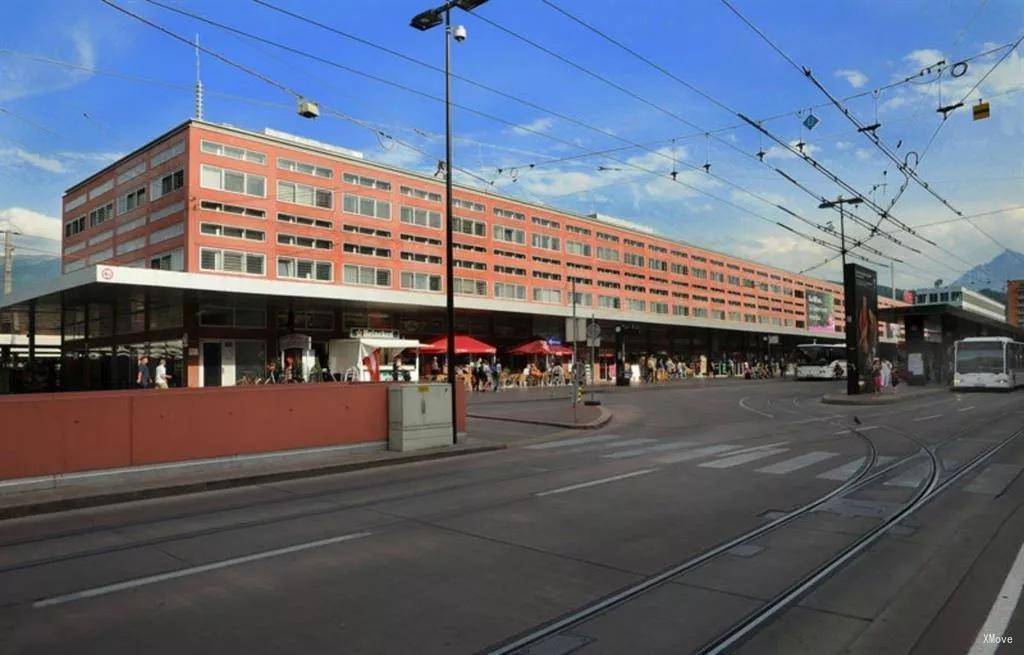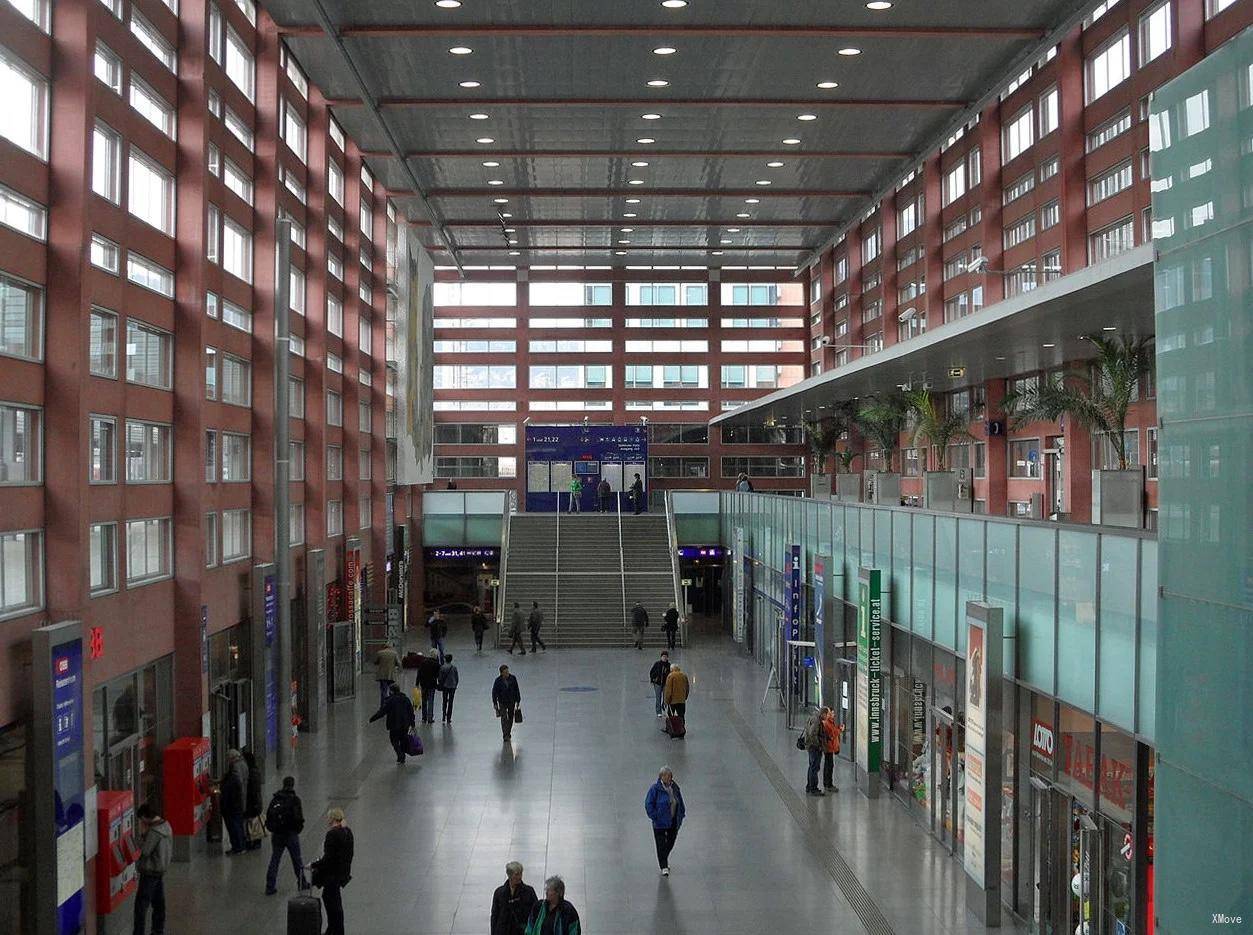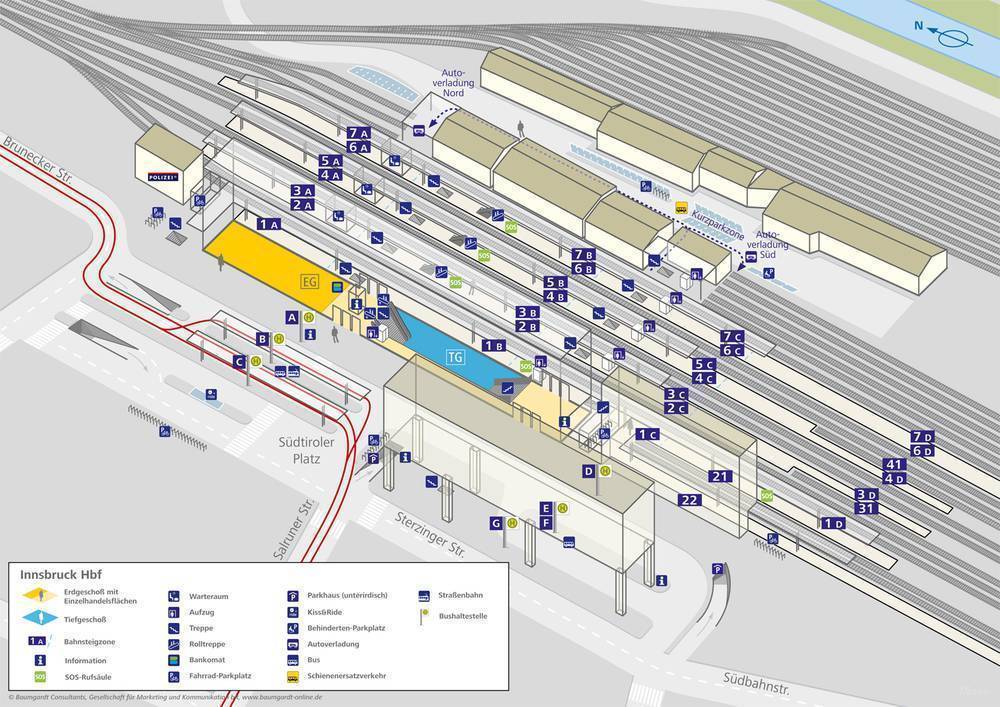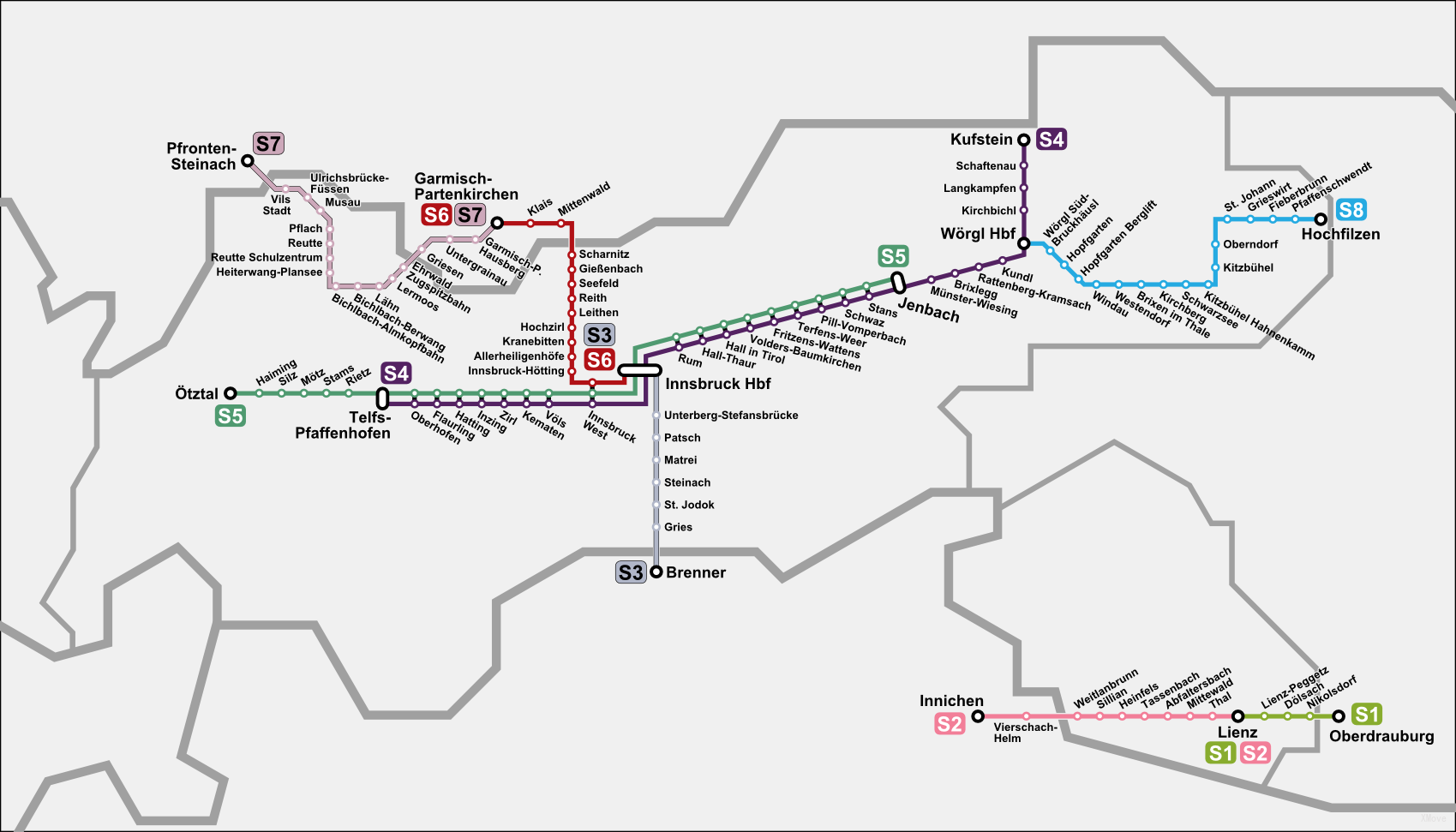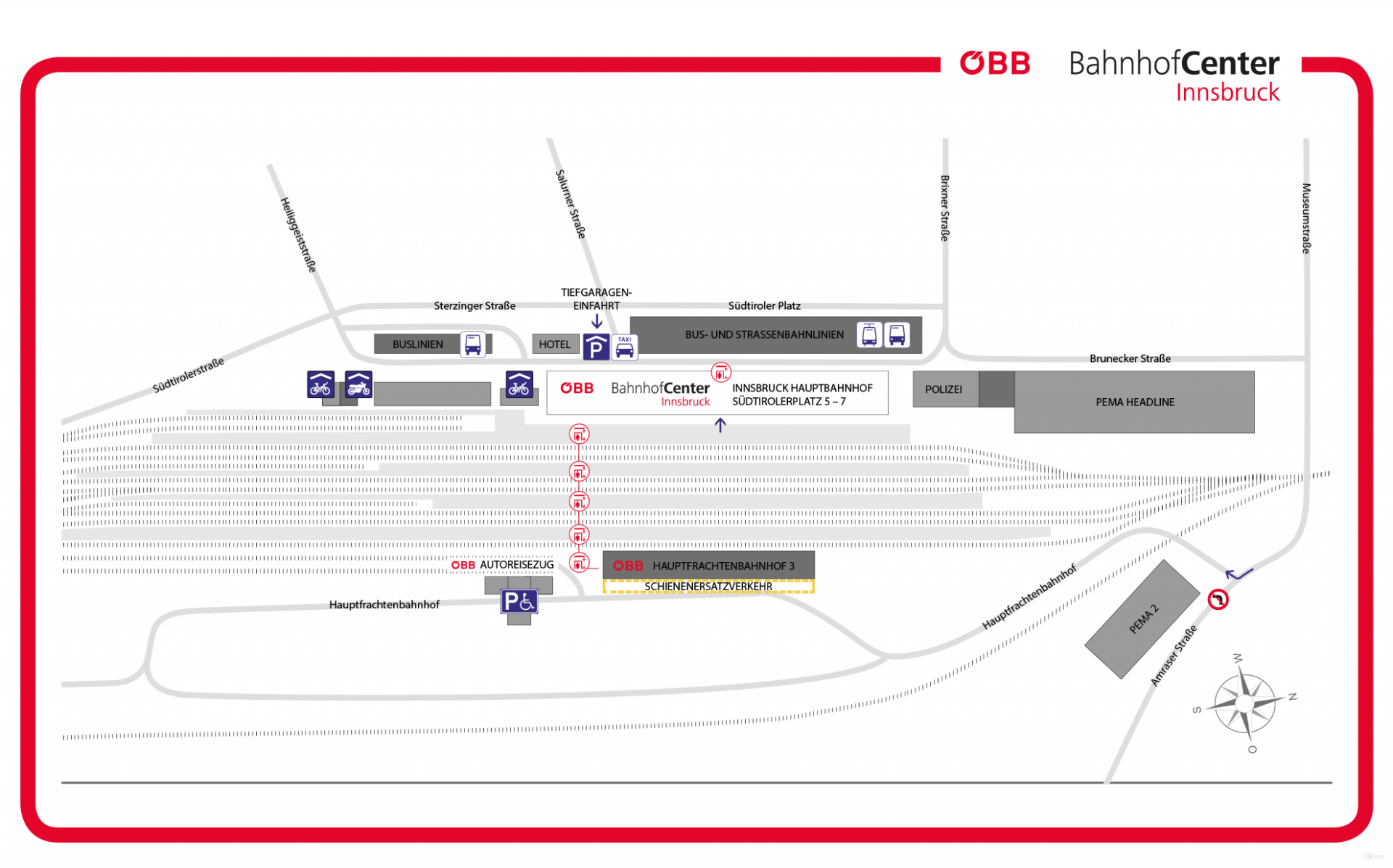Introduction
Innsbruck Central Station is the main railway station in Innsbruck and the capital of the Austrian Federal Tyrol. Opened in 1853, it is one of the busiest train stations in the country with approximately 25,000 passengers per day.
Platform
At Innsbruck Central Station, most trains depart from the platform (No. 1-7) and are divided into areas A, B, C and D. On the departure screen, you will see the various trains entering and leaving the station through these areas and the platform.
The train departs from the upper level, so there are two passenger passages under the platform that can be used to enter the train from the departure hall. However, when taking the train from Innsbruck Central Station, please pay special attention to which station area your train will leave.
When you face the platform from the departure hall, the passenger lane on the far left of the hall is the fastest route to the A area. The channel on the right enters zone C and zone D as quickly as possible. If your train departs from Area B, both passenger passages are available. If you start your journey in Innsbruck and your train departs from platform 21-22, you do not need to use any access as they can enter from the south side of the departure hall.
If your train is not listed on the departure screen, you can use the yellow "Abfarhrt" departure poster to see the details of its departure.
Transfer Information
If you need to transfer between stations when changing trains, you must use two passenger passages under the platform. Both passages are connected to each station via stairs, escalators and lifts, so you can easily find elevators at each station. If you change trains at Innsbruck Central Station, the subsequent train will depart from stations 21 and 22 and you will find the elevator at the end of station 1.
Station Facilities
The station has baggage temporary storage services, as well as major services such as passenger centres, taxi stands, car rentals and bus stops.
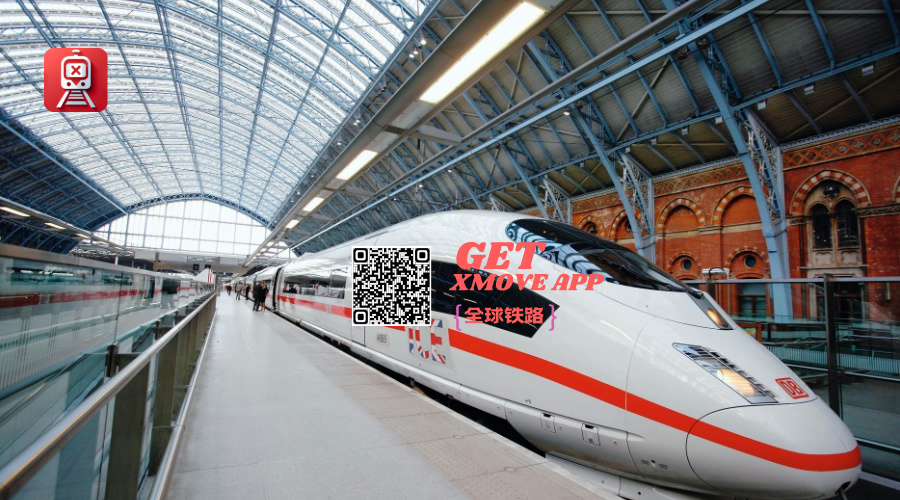
Ultimate Guide to German Railways
For those who love to travel, the quality and service of German Railways (Deutsche Bahn AG or German Railway abbreviated as DB) are world-class, with free entry and exit without ticket gates, ICE high-speed trains with a speed of nearly 300 kilometers per hour, and dense With the railway network and precise and punctual schedules, if you want to enjoy the way of traveling through the state and provinces on the train, Germany can be said to be the best choice.
There are approximately 37,000 trains operating in Germany every day. Most of the trains are operated by 24 railway companies under Deutsche Bahn. Deutsche Bahn also has the world's third densest railwa...

Ultimate Guide To FlixBus/FlixTrain
Friends who live in Europe know that buses are currently one of the cheapest ways to travel in Europe. Flixbus is currently the largest long-distance bus company in Europe.
At present, Flixbus not only does business in popular tourist cities, but most of the large residential towns in Europe have bus stations, including Germany, France, Italy, Netherlands, Poland, Czech Republic, Denmark, Sweden, Norway, Switzerland, Spain , Portugal, Hungary, Austria, Croatia, Belarus and other countries. Among them, the German route is the cheapest. Flixbus began to expand to the United States in 2018, and currently has thousands of sites in the United States.
...
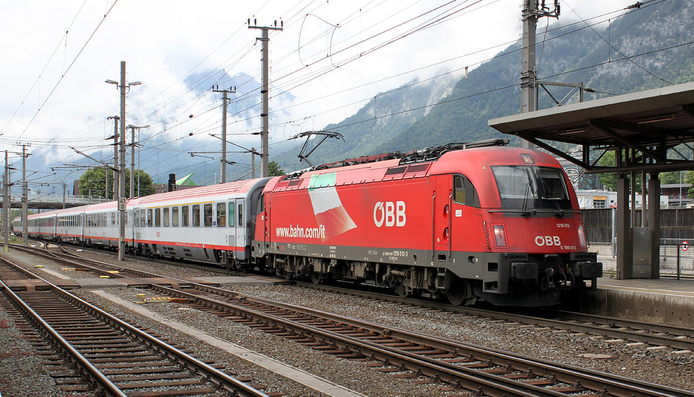
Ultimate Guide to Austrian Railways
Traveling through Austria by train is now getting faster and easier. The best way to explore Austria is to travel through magnificent mountain views, lush alpine meadows, historic towns and picturesque villages. Austria is located in the central part of the European continent adjacent to Germany and Italy. It also borders the Czech Republic, Slovakia, Hungary, Slovenia, Liechtenstein and Switzerland. Its train network is well connected to surrounding countries. With a punctuality rate of 96%, ÖBB was one of the most reliable railway operators in Europe in 2018.
Austria’s main train service operator is the state-owned company ÖBB, which serves almost the entire country. There are some private railway companies that are not part of ÖBB. In the corr...

